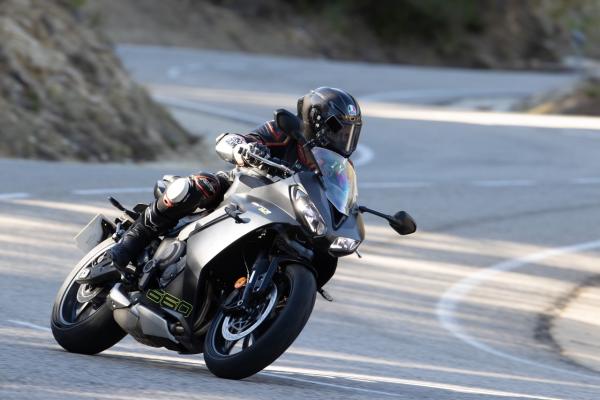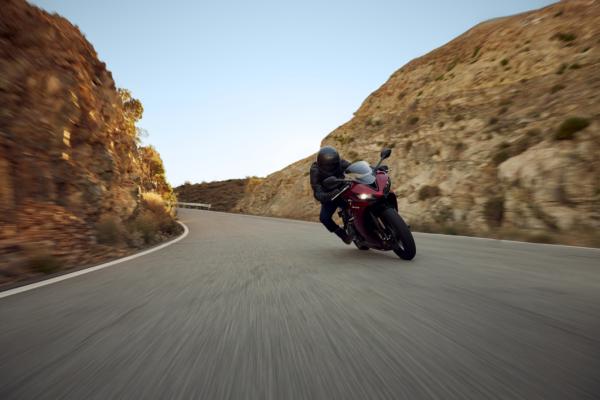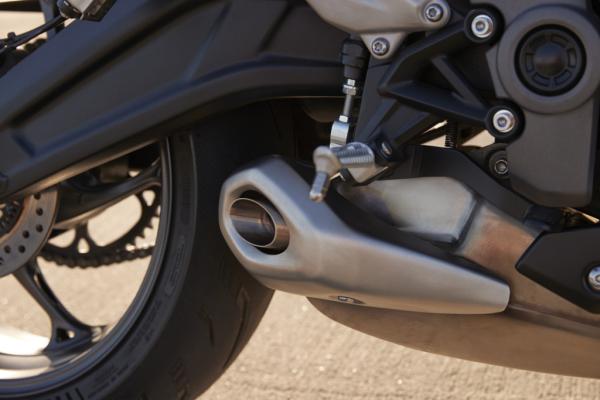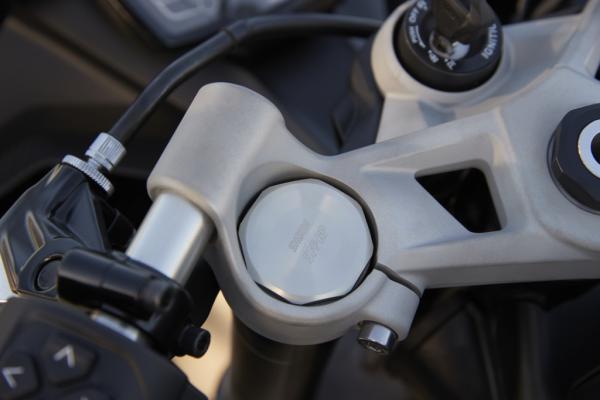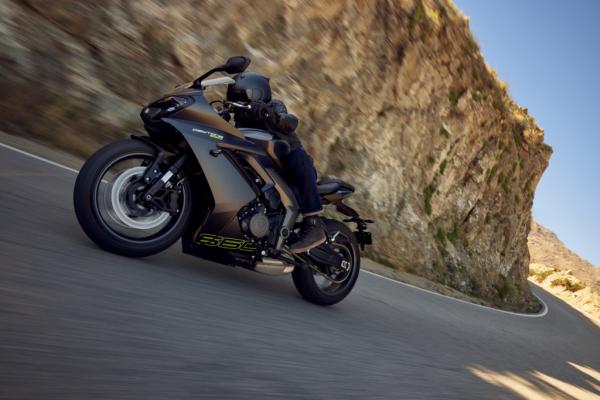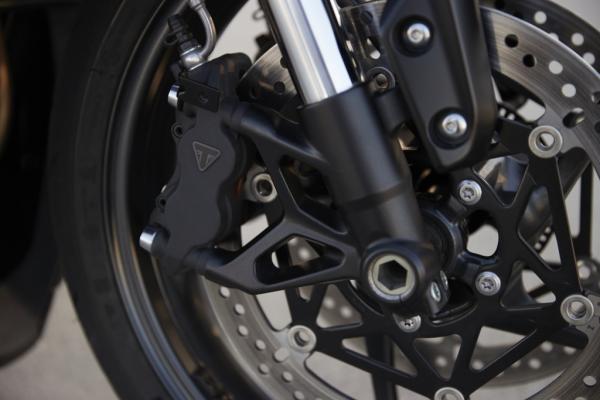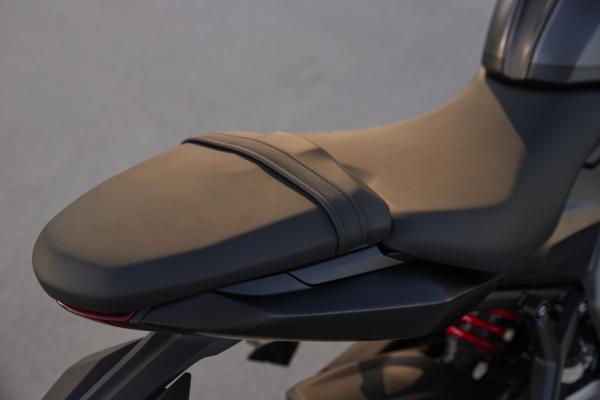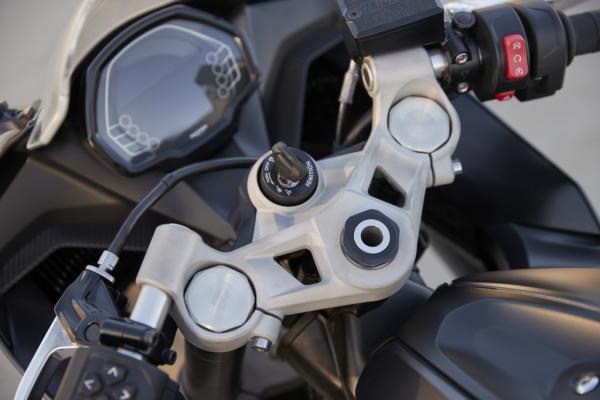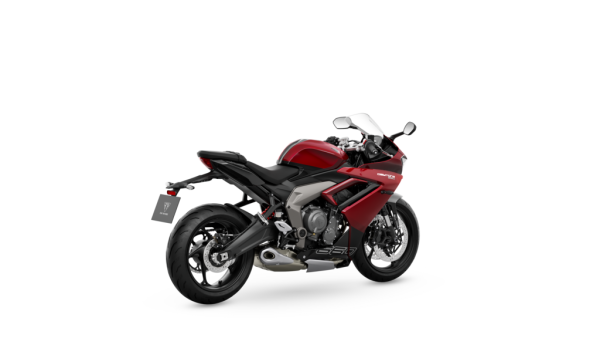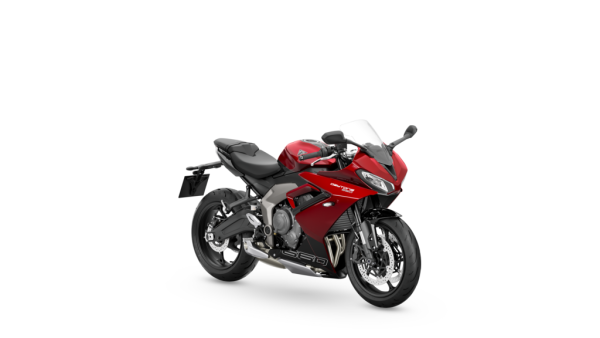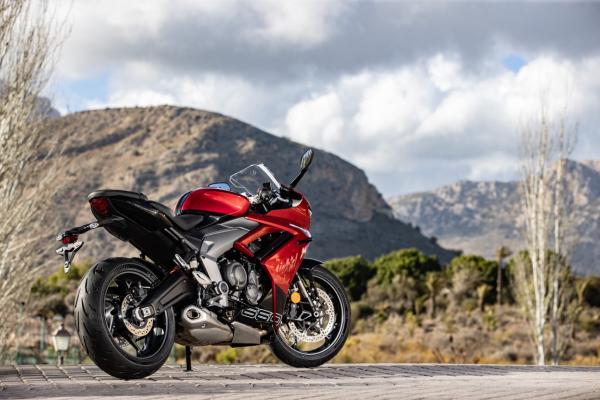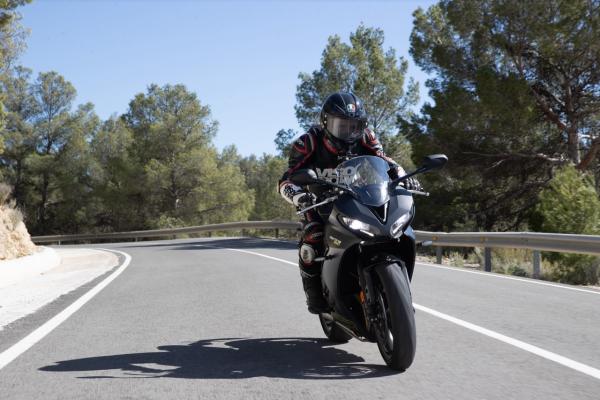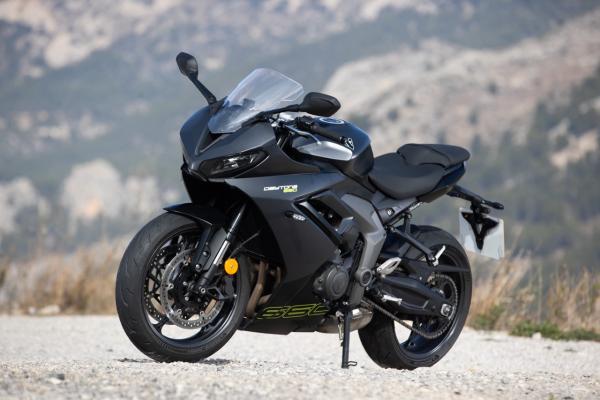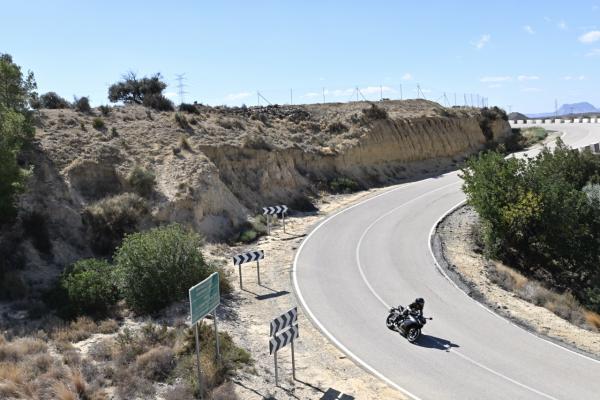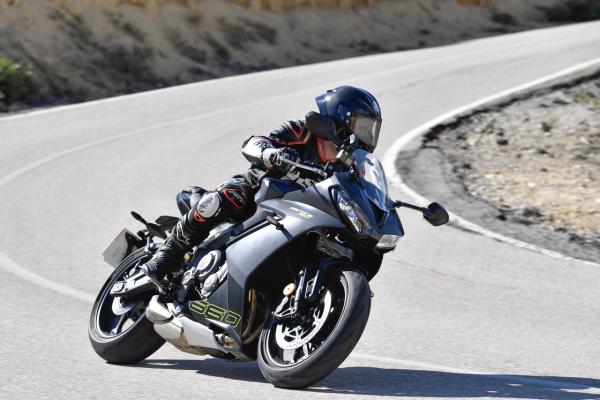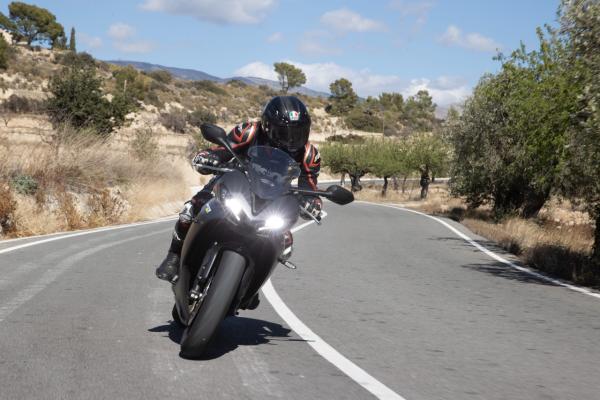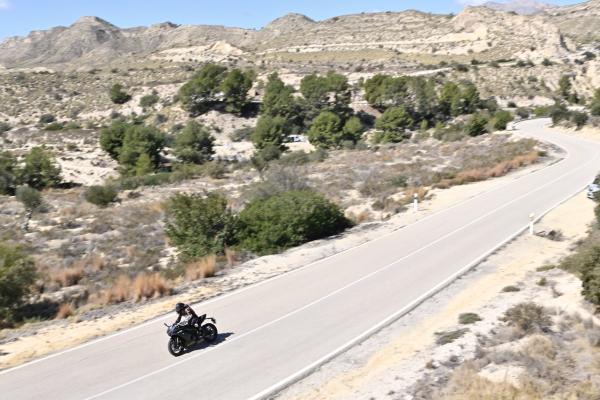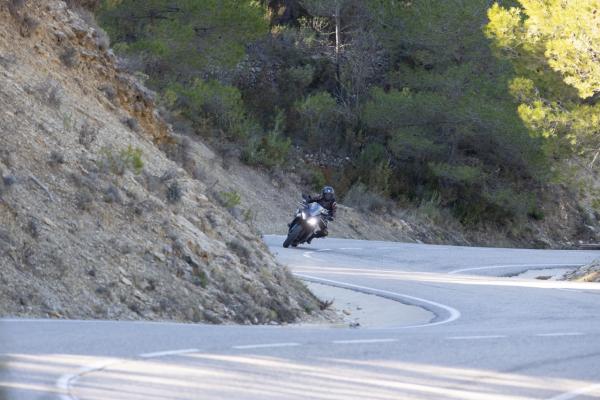Triumph Daytona 660 Review - The Famous Name Returns For 2024
The Triumph Daytona 660 has finally landed, and Visordown went along to the global press launch in Benidorm to find out what the new bike is all about

Member for
54 years 8 monthsThe Triumph Daytona 660 is here to take on the repositioned supersport sector, where screaming inline four-cylinder track weapons are out, and more road-focused user-friendly machines are in.
This means the new Daytona is shaping up to compete against bikes like the Yamaha R7, Honda CBR650R, Aprilia RS660, and Kawasaki Ninja 650. Each is a road-focused sports bike first and foremost, although the Triumph has something none of the current bikes do, an inline three-cylinder engine.
To head straight to the riding review of the new Daytona, click here.
What’s new?
The bike that you can see before you is closely related to two other bikes in the Triumph range: the Trident 660 and the Tiger Sport 660. The basic engine block and casings are the same as both those models, although the rest of the bike has more in common with the Trident 660 than the Tiger Sport 660. It does though have a significant number of changes when compared to the Trident, with the chassis, engine, and electronics differing in some way from its naked sibling.
The engine is one area that has seen a number of changes over the Trident, with the new Daytona featuring three individual throttle bodies, not the single item found on the naked. Dig a little deeper into the engine and you’ll find larger exhaust valves, a new valvetrain with higher lift cams, new pistons, a new combustion chamber, and a new crank.
The result of all these changes is an engine that produces 93bhp and 51lb ft of torque, with 80 per cent of that torque available from above 3,000rpm - for reference the Trident 660 gets 80bhp and 47 lb-ft of peak torque. It’s engine characteristics like this that tip this as a road-biased sports bike, not an out-and-out track-ready machine like the Yamaha R6 or the reborn Honda CBR600RR. The gearbox of the new bike has also been updated, with slightly longer ratios and a taller final drive appearing on the Daytona.
The chassis is revised, and we can find 41mm Showa Separate Function Big Piston upside-down forks at the front, and a Showa Balance Free rear shock, both of which are tuned for road riding and non-adjustable - aside from a remote pre-load adjuster on the rear shock. Suspension travel at the front is 110mm and 130mm at the rear.
The geometry of the bike is also new, with Triumph giving the new Daytona 660 a steeper rake, less trail, and placing more of the rider’s weight over the front end of the bike. Overall the Daytona is slightly longer than the Trident 660, with a wheelbase of 1425.6mm, a rake of 23.8 degrees and trail of 82.3mm. The frame has been altered slightly to make room for the new trio of throttle bodies.
Braking on the bike is taken care of by four-pot radially-mounted calipers at the front which act upon 310mm floating discs and a two-piston sliding caliper with a 210mm disc at the rear. The brakes are Triumph branded and developed by “a leading braking manufacturer” for the bike, although when asked, Triumph declined to say which particular firm. The ABS on the bike is a standard two-channel system, meaning no fancy IMU control for either the ABS or traction control.
The riding position of the Daytona 660 has been described as not as extreme as is found on the Yamaha R7, but not as relaxed as on the Kawasaki Ninja 650. The clip-on bars are mounted above the top yoke, while the footpegs are higher up and further back than they are on the Trident 660. Having sat on the new bike I can tell you it is markedly more extreme than the Trident it shares many of its parts with, but it didn’t feel so cramped that I couldn’t imagine covering 150 miles or so on it. The launch of this bike is happening in March, so check back on this page for the full review to tell you how we got on.
On the technology side, the new Daytona 660 has a smattering of systems as standard and a couple that can be added as optional extras. As standard, the bike gets three riding modes, Rain, Road and Sport. Each features a bespoke throttle map and traction control intervention level. Should the rider want to, the traction control system can also be turned off via the menus within the hybrid TFT/LCD dash - as also found on the Trident 660 and Tiger Sport 660.
Triumph Daytona 660 UK price, colours and availability
The new Daytona will be landing in UK dealerships from March 2024 onwards, and interested parties can speak to their nearest Triumph dealership from now on to place a deposit.
It’ll be available in three colours: Carnival Red, Satin Granite (grey), and Snowdonia White. Pricing will start from £8,595 and a full range of accessories will be available from the day the bike arrives.
That list price means the new Daytona undercuts the Yamaha R7, Aprilia RS660 and Honda CBR650R (although only by a fraction on the latter front). The only other model that falls into this new category of super sports bikes that costs less than the Triumph is the much more relaxed (and not as highly specced) Kawasaki Ninja 650.
The Triumph Daytona 660 finished in Carnival Red
What's it like to ride?
For the launch ride of the new Daytona 660 Triumph has laid on a 100 per cent road riding day on the new sports bike, and while that might seem odd, with most of its rivals gaining road and track or full track launches, it all comes down to the designation of the new machine. Triumph was keen to stress that the bike is a road-focused sports bike, not an out-and-out track-ready motorcycle as its predecessor, the Daytona 675 and more recently Daytona 765 Moto2 Edition, were.
Hopping on the 660 for the first time this road-biased theme is immediately evident, the riding position is very nicely relaxed, with an accessible 810mm seat height, narrow step-over, and handlebars mounted above the triple clamp for an easygoing and neutral riding position. The pegs feel nicely low-set and feel like they’d leave plenty of room for taller riders than my dinky five-foot-seven-inch frame.
Peeling out of the hotel the first thing that strikes me is how easy to ride it feels. The power delivery, I was in the raciest ‘Sport’ mode, is still nicely manageable, and the inline three-cylinder provides a wide spread of mid-range torque for you to play with.
The next thing that strikes me is how compliant and soft the bike feels. We aren’t out of town yet and nowhere near a twisty B-road, but any lumps, bumps, potholes or speed humps are soaked up nicely by the Showa Separate Function Big-Piston forks and Showa rear shock. There’s no adjustability, aside from manual preload adjustment at the rear, and it is making me wonder if this softly sprung sports bike will give me everything I need once the pace rises.
Overall though, it feels like a decent little city slicker, nimble when flicking from side to side, and with featherlight steering even at a standstill. The bikes we’re riding are totally stock, meaning no quickshifter (which is a circa £300 option) and the linkage to the gear lever has changed from the Trident 660 due to the rearset now being mounted further back. This has changed the feel at the lever somewhat, and while you can still shift accurately and without encountering false neutrals, I am feeling that a quickshifter fitted as standard would have been nice.
With the town now behind us the roads lead up into the mountains that lie above the sunburned chav-fest that is Benidorm, and as expected, the softer suspension is beginning to cause some issues. For the most part, and when riding at ‘normal’ speeds it’s not a problem, but when I really push the Daytona to the limit I’m longing for a slightly more stable and reassuring front end.
The forks dive through their stroke on the brakes, and then when I release the break at the apex of the turn the rebound sends the suspension back up to the top of its travel, making me feel like some more preload in the spring and rebound damping is needed. Conversely, at the back of the bike, the rear shock falls through the stroke on acceleration, taking the weight off the front tyre and making it all feel a little bit vague.
I’m being hyper-critical here, and one thing I’m constantly having to remind myself of is where this bike fits into the market and who it is aimed at. For newer riders, those moving up from 125s the little Daytona will likely be the fastest, best handling and best-looking bike they have ever ridden, and I’m sure they absolutely love it for that. For those with slightly more experience of riding supersport 600s as we knew/know them, they might be better off looking at a secondhand Daytona 675 R or Street Triple RS.
One standout feature of the bike is the brakes, which I find to be very powerful. Plus, there’s a progressive lever that allows you to dial in the perfect amount of braking power every time. The non-switchable ABS is a little intrusive, but again, for the sector the 660 is plunging into it should be just right. It’s a new braking system on the bike, featuring neat-looking four-pot radially-mounted calipers, not the axially-mounted system as found on the Trident 660, and 310mm floating discs.
Slightly bouncy suspension aside, the Daytona 660 is a very enjoyable bike to ride. It’s supremely light and agile, and flicks left to right with ease, had it got a more surefooted front end mated to it, it’d probably be one of the best handling machines in this burgeoning new class of bikes. The brakes are great, the throttle connection crisp and accurate and the riding position very very comfortable. It also looks mega, and in the late evening sun, you can just about pick out the DNA of its more track-focused older sibling.
Electronically the new Daytona has much the same system as the Trident, meaning a Rain, Road, and Sport riding mode, each giving different throttle maps, power outputs, and ABS settings - and they are all optimised for the new sports bike. You can also turn the traction control off manually in any of the modes, although on the stock tyres on a cold day, I’d be a little wary of doing this. I am encountering some rear-end slip coming out of slower corners, which is noticeably worse when the bikes have been sat and the tyres are cool.
If anything, I’d be looking to slot some Pirelli Rosso Corsa IIIIIs onto the bike if I had one of my own. The stock Michelin RoadSport 2s are okay, but the long time to warm up and the apparent inability to retain any heat is hampering progress somewhat. They feel a bit like a tyre created more for longevity, and not out-and-out performance - again, for the sector the bike is aimed at (and for the vast majority of newer riders) I’m sure they’ll be perfectly fine.
Another bonus of bagging a Daytona in 2024 is the fuel economy. On the launch in Benidorm I managed to return a fairly incredible 40 mpg, most of the day sat flat out in second and third gear. Assuming the calculated economy figure is accurate, which in my experience it normally is on a Triumph, the 14-litre fuel tank should mean you’ll be getting between 150 and 170 miles of more sensible riding between filling up.
Should you buy a Triumph Daytona 660?
It’d be easy to read this and think that the new Daytona is a swing and a miss but I don’t think that’ll be the case. It is a good little bike, with a fantastic engine, a nimble chassis and awesome braking performance. It’s comfy, probably the best-looking bike in the class and is entertaining to ride.
The suspension could do with some more fine-tuning, but Triumph isn’t a brand that sits on its bikes post-launch and leaves them as they are. The engineers listen, to journos and punters, and make changes as they are needed. There is also the intended use of the bike to consider, and you have to assume that for the vast majority of new owners of the Daytona 660, it’ll be everything they hope for and more. And I’m willing to bet my bottom dollar (if I had any) that the next generation of the model will be even better still.
Triumph Daytona 660 specification
ENGINE AND TRANSMISSION
Type | Liquid cooled, inline three-cylinder,12 valve, DOHC, 240-degree Firing order | |
Capacity | 660cc | |
Bore | 74.04mm | |
Stroke | 51.1mm | |
Compression | 12.05:1 | |
Maximum Power | 93bhp at 11,250rpm | |
Maximum Torque | 51lb ft @ 8,250 rpm | |
Fuel System | Multipoint sequential electronic fuel injection with electronic throttle control | |
Exhaust | Stainless steel three-into-one header system with low single sided stainless steel silencer | |
Final Drive | X-ring chain | |
Clutch | Wet, multi-plate, slip & assist | |
Gearbox | Six speed |
CHASSIS
Frame | Tubular steel perimeter frame | |
Swingarm | Twin-sided, fabricated steel | |
Front Wheel | Cast aluminium alloy 5 spoke, 17 x 3.5 in | |
Rear Wheel | Cast aluminium alloy 5 spoke, 17 x 5.5 in | |
Front Tyre | 120/70 ZR 17 | |
Rear Tyre | 180/55 ZR 17 | |
Front Suspension | Showa 41mm upside down separate function big piston (SFF-BP) forks, 110mm Wheel travel | |
Rear Suspension | Showa monoshock RSU, with preload adjustment, 130mm Wheel travel | |
Front Brakes | Twin 310mm floating discs, 4 piston radial callipers, ABS | |
Rear Brakes | Single 220mm fixed disc, single piston sliding calliper, ABS | |
Instruments | Multi-function instruments with colour TFT screen | |
DIMENSIONS & WEIGHTS | ||
Length | 2083.8mm | |
Width (Handlebars) | 736mm | |
Height Without Mirrors | 1145.2mm | |
Seat Height | 810mm | |
Wheelbase | 1425.6mm | |
Rake | 23.8° | |
Trail | 82.3mm | |
Wet weight | 201kg (@90% fuel volume) | |
Fuel Tank Capacity | 14 litres | |
FUEL CONSUMPTION
| ||
Fuel Consumption | 57.6 mpg (4.9litres / 100 km) | |
CO2 Figures | 113 g/km | |
Emissions Standard | EURO 5+ | |
SERVICE | ||
Service interval | 10,000 miles (16,000 km) /12 months service interval, whichever comes first | |
